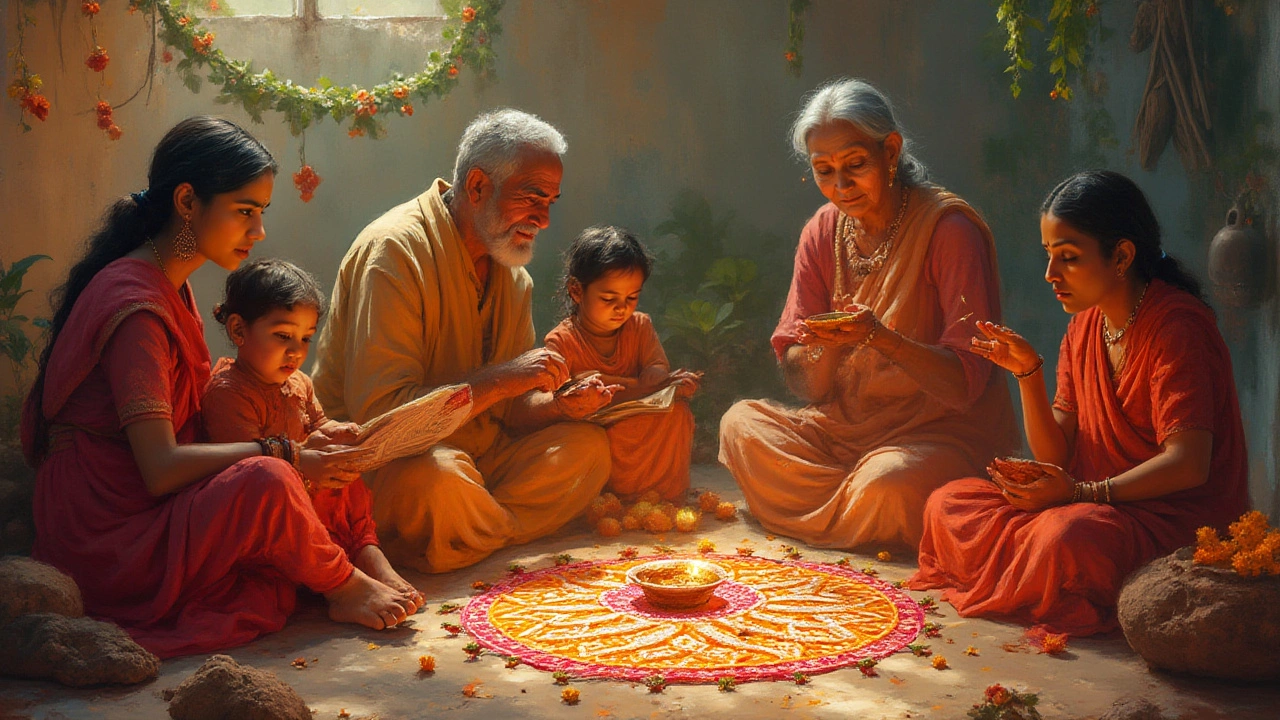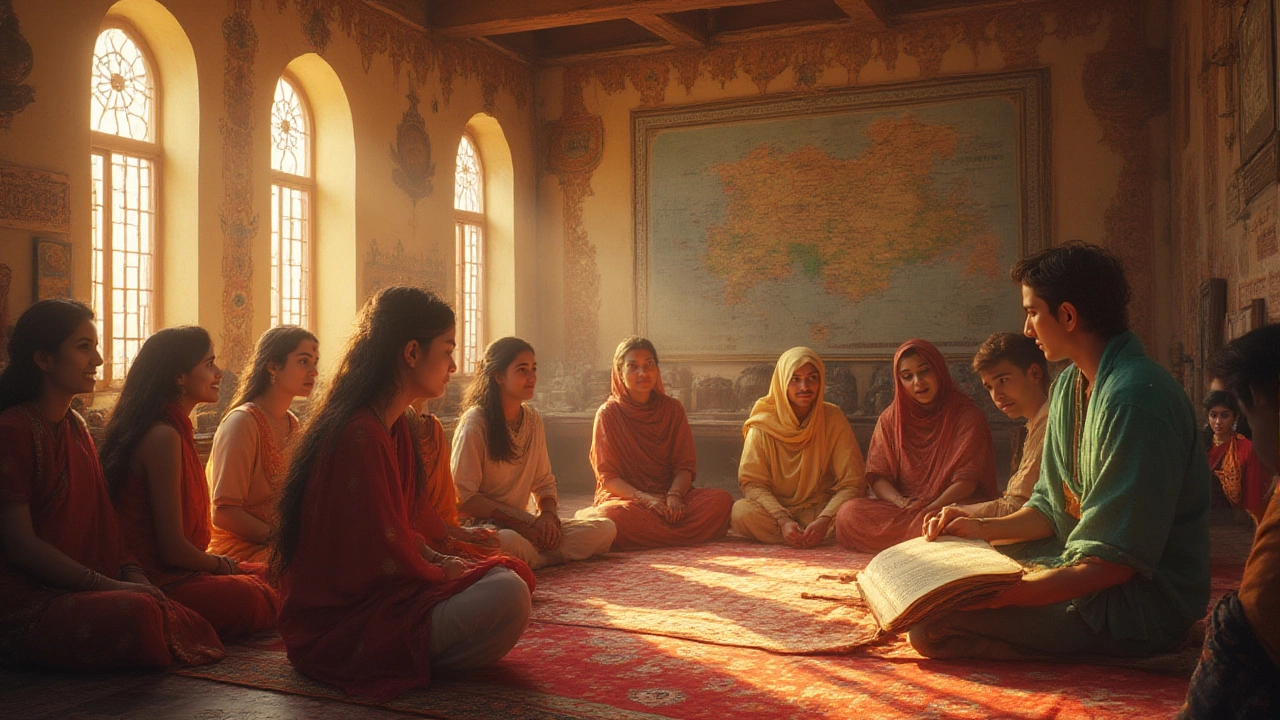Imagine opening a textbook and finding a subject that isn’t just about facts, but about who you are—your family’s rituals, the music in your neighborhood, hot chai aromas, ancient ruins, folk tales, that cricket tournament your grandpa recalls from the ‘70s, and the worn saris stacked in old trunks. This isn’t just nostalgia. This is the living core of Indian heritage and culture, taught and passed down, not just in classrooms but in every corner of life. Yet, ask five people which subject best sums up Indian heritage and culture, and you’ll probably get five different answers. It’s that big. But why is it so hard to pin down the subject of Indian heritage and culture, and how do schools even begin to teach something so wide and deep?
What Makes Indian Heritage and Culture a School Subject?
“Indian heritage and culture” isn’t just a fancy phrase. Walk into most Indian schools—or even check out diaspora programs in Toronto—and you’ll see it as a subject in the curriculum, especially for students prepping for the Civil Services. The Central Board of Secondary Education (CBSE), and also state boards, offer classes on Indian culture from middle school onwards. The idea isn’t just to make students memorize old temple names or dates; it’s about helping young people understand the ideas shaping how Indians think, live, and dream—past and present.
These classes mix it up. You’ll find Indian art, music, dance, architecture, festivals, ancient languages, literature, philosophy, science, law, and even food customs. For example, students might spend a week comparing Buddhist cave paintings in Ajanta with contemporary Bollywood posters—or break down how rangoli designs get passed through generations. It’s about the layers: not just what happened, but how and why. That’s why the curriculum isn’t only about old stones and stories. It looks at how ancient scripts still shape email sign-offs today, or how open-market festivals aren’t just commerce but a blend of tradition and innovation. Indian heritage and culture as subject matter isn’t dusty history; it’s living, breathing, evolving right in front of us.
Here’s where it gets tricky: “heritage and culture” crosses subject boundaries. Is it history? Literature? Art? Sociology? It’s a fusion. That’s why, in the National Education Policy (NEP) 2020, experts suggested blending these elements instead of boxing them into just one subject. The NEP wants schools to move beyond rote memorization and instead teach children why the Vedas, Mahabharata, or Mughal miniatures aren’t just old stuff—they’re blueprints for how we see the world, relationships, even conflict and forgiveness.
Most textbooks follow themes like:
- Religious traditions: Hinduism, Buddhism, Jainism, Sikhism, Islam, Christianity, and their influence on art and everyday life.
- Classical literature: Ramayana, Mahabharata, Sangam poetry, Sufi poetry—how these still shape everything from movies to memes.
- Philosophy: Vedanta, Buddhism, Yoga, non-violence—why these ideas still drive national debates or wellness crazes in Toronto and Mumbai alike.
- Festivals: Diwali, Eid, Christmas, Holi, and hundreds of local harvest festivals—and how they’re more than just days off from work.
- Science and math: Aryabhata, Susruta, Bhaskara I, Lighthouse at Mahabalipuram, Iron Pillar in Delhi—the science behind myths.
Students might need to do projects like tracing their family histories, reconstructing old recipes, or creating art influenced by tribal patterns. They’re nudged to ask: what does being Indian mean in a global world?
Roots That Go Deep: The Real Origins of Indian Heritage Studies
People usually think Indian heritage studies are a modern thing—maybe even a post-independence project. But the roots go much deeper. Colonial-era British administrators started classifying India’s cultures and built museums for their own understanding. Yet, long before British rule, India’s own scholars created encyclopedic texts. Kautilya’s Arthashastra discussed laws, philosophy, politics, and economics more than 2,300 years ago. Vatsyayana detailed daily social life in the Kamasutra. Buddhist and Jain monks collected oral knowledge in palm-leaf manuscripts across centuries, building a culture of storytelling and archiving.
When Indian universities were founded in the 19th and early 20th centuries—think Banaras Hindu University, Aligarh Muslim University—subjects like history or Indology (the formal study of Indian culture and languages) popped up as standalone disciplines. But these were mostly elite topics, reserved for scholars and not your average school kid. Fast forward to independent India: Jawaharlal Nehru and thinkers like S Radhakrishnan pushed for heritage-based subjects to be central—not just an afterthought for the few.
That’s how you got the “Social Studies” curriculum in primary and secondary schools, seamlessly mixing geography, civics, and history, but also focusing on stories, folktales, and rituals. In many regional boards—like Maharashtra, Tamil Nadu, and West Bengal—culture and heritage became compulsory, which meant millions of kids heard stories from Birbal, Kabir, or the Bhakti Saints, or learned about local textile arts and tribal dances, not just kings and wars.
Colleges stepped up too. Over fifty Indian public universities now have full-time departments focused on heritage and cultural studies. They offer bachelor’s and master’s degrees. Delhi’s IGNOU, for example, launched a BA dedicated to Indian culture, while the National School of Drama explores how folk theater blends Sanskrit and Dravidian traditions. These programs hand over not just facts but immersive experiences—field visits, restoration work, interviews with artisans, and more.
And then there’s the diaspora. In Canada, for instance, Toronto’s York University introduced a course on South Asian heritage that not only covers Bollywood and bhangra but asks hard questions about identity and memory. Why are classical dances like Bharatanatyam and Odissi taught to second-generation kids? Because they’re bridges—across continents, generations, and histories.
So, asking “which subject is Indian heritage and culture?” is a bit like asking which thread makes up the entire fabric. Historians, anthropologists, linguists, artists—all jump in, making the subject inherently multidisciplinary. If you want to go by exam boards, the closest answer is usually “Social Studies” or “Indian Culture” as formal subjects, but the lived reality is way bigger.

How Indian Heritage and Culture Is Taught and Lived
The most interesting fact? The subject isn’t just about textbooks, but hands-on learning. Many schools ask students to document their own festivals, record folk songs from grandparents, or even visit local historical sites as class trips. For instance, students in Gujarat often visit the Sun Temple at Modhera to learn about solar geometry, while classes in Kerala might cook Onam Sadhya together to understand community and seasonal rituals. The process is immersive and interactive—rarely just chalk-and-talk.
Here’s a tip that works well for anyone wanting to dig further: don’t just read, participate. Volunteer at local temple festivals, take a walk with a historian in your city, or taste dishes during a regional food fair. These are all living museums—no ticket required. Digital resources are blooming too. The National Digital Library of India offers free access to folklore archives, drama performances, and museum tours, making it way easier to experience heritage from anywhere, even from your couch in Toronto.
Modern teachers often use tech like interactive maps or AR tours. Imagine comparing Mauryan-era city planning with modern Indian metros using drone footage, or testing out virtual reality recreations of ancient sites like Nalanda or Vijayanagara. The magic isn’t in the tech alone but how it pulls together old and new—connecting grandparents’ memories with AI-powered lesson plans. Local languages also get a big push in these classes. Sanskrit, Tamil, Hindi, and even tribal dialects pop up, not just as subjects but as vehicles for wider cultural conversations.
Assessments go beyond exams. Students might curate digital exhibitions, host heritage quizzes, or make documentaries. Community engagement matters here—a 2022 survey by Pratham Foundation found that kids who participated in local cultural events did 15% better in heritage-related questions than those who relied only on textbooks.
And don’t underestimate daily living. Every time kids watch a Kapil Sharma skit that draws on old tales or follow Instagram accounts archiving lost Mughal recipes, they're learning heritage. Indian popular culture—cinema, music, even memes—is a massive, moving classroom. As Bollywood songwriter Javed Akhtar once put it:
"Indian heritage is not something kept locked in a museum. It walks in our lanes, laughs in our songs, breathes through our language.”
Let’s make it practical with some data. Here’s a quick table presenting the most common subjects through which Indian heritage and culture is officially taught:
| Subject | Level | Core Topics Included | Sample Activity |
|---|---|---|---|
| Social Studies | Class 6-10 | Indian History, Festivals, Architecture, Dynasties | Field visit to monument |
| Art & Music | All grades | Classical/folk dance, theatre, music genres | Organizing cultural fest |
| Indian Culture | Grades 9-12 & college | Philosophy, Traditions, Heritage Sites | Case study on yoga trends |
| Regional Language Studies | All grades | Local literature, oral history | Translating folktales |
| Heritage Management | University | Preservation, restoration, museum studies | Internship at museum |
Modern Challenges: Keeping Heritage Relevant in a Fast World
Indian heritage and culture have this weird double edge. On the one hand, most Indians take pride in their ancient roots. At the same time, the world's spinning faster than ever—urbanization, tech, pop culture shifts, everyone glued to their phones. So how do you keep heritage and culture relevant for a generation obsessed with Instagram Reels and K-dramas?
The biggest challenge is avoiding the “boring old stuff” syndrome. If classes rely only on memorization, young people check out. But when teachers show how a 16th-century poem explains modern heartbreak as well as a Shah Rukh Khan movie does, suddenly everyone sits up. Mixing old and new isn’t just fun; it keeps the subject alive. Schools now invite artists, filmmakers, and craftspeople to do interactive masterclasses. Universities collaborate with startups to document disappearing oral traditions using apps. Even WhatsApp groups for grandparents’ stories have become literal goldmines for research.
Another pitfall is oversimplification. India isn’t a monolith: tribal cultures, Dalit traditions, north VS south, east VS west—it’s massive diversity. Courses now try to balance major, “mainstream” traditions with voices from the margins. For example, the story of the Bhil or Changpa nomads appears next to lessons about Mauryan emperors, showing that everyone, not just the famous, builds heritage.
But the big question remains: with migration and globalization, can culture really be taught? In 2023, a Pew Research Center poll found that while over 80% of urban Indian parents want their kids to learn at least one regional art or language, only about 27% of young adults actually do. That’s a huge gap. Experts suggest that the solution isn’t force-feeding ancient tales but making them part of real life—think YouTube crafts in Hindi, yoga sessions in Tamil, or rap songs using old Sanskrit lyrics. Culture shifts, and teaching has to shift along with it.
Maybe the best way to sum it up: Indian heritage and culture is a subject, but also an experience—a playlist of stories, smells, ideas, and inventions that don’t stay only in the past. You see it across generations, in classrooms, festivals, WhatsApp messages, and even in the way Indians say “chai?” instead of “coffee?” You can study it formally, or just live it—every single day.
